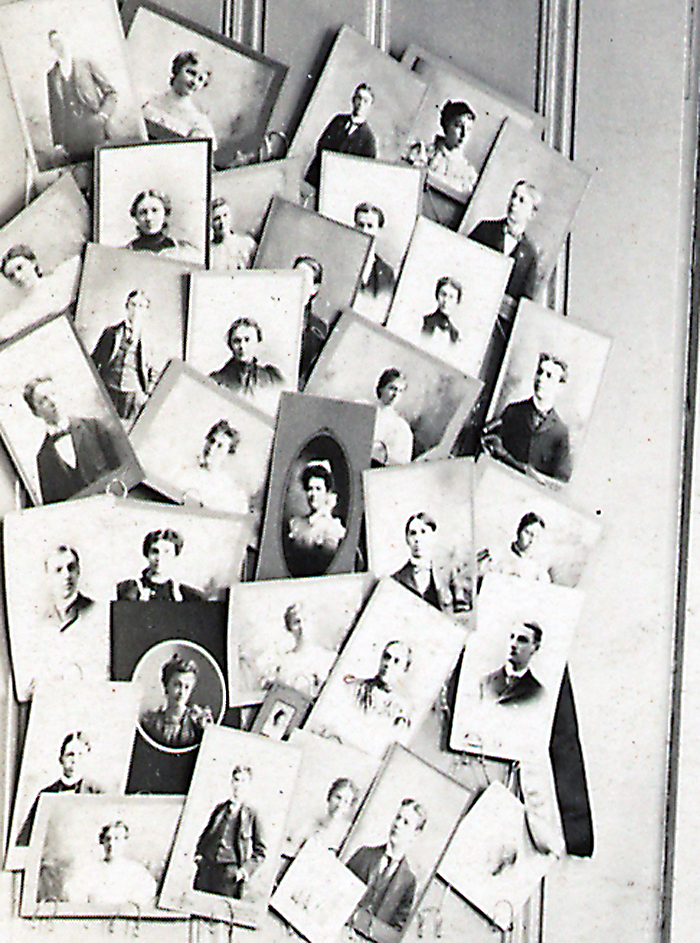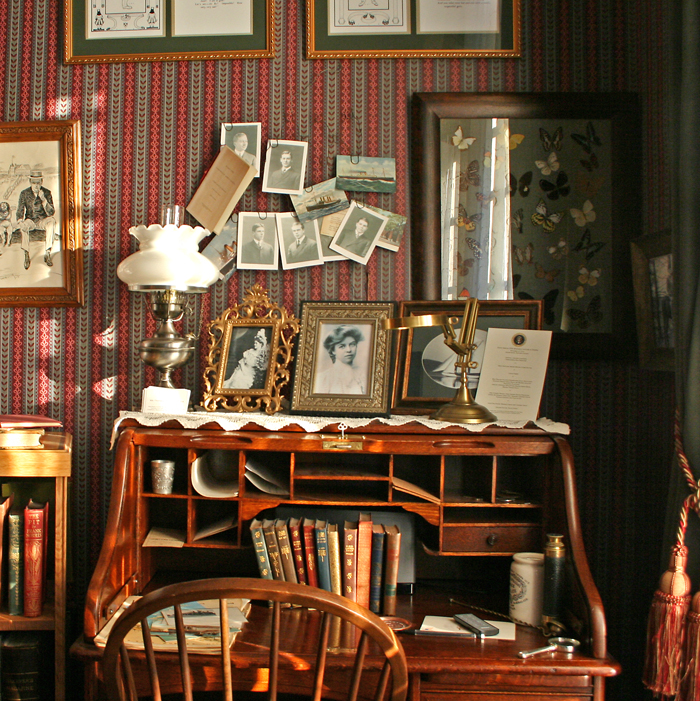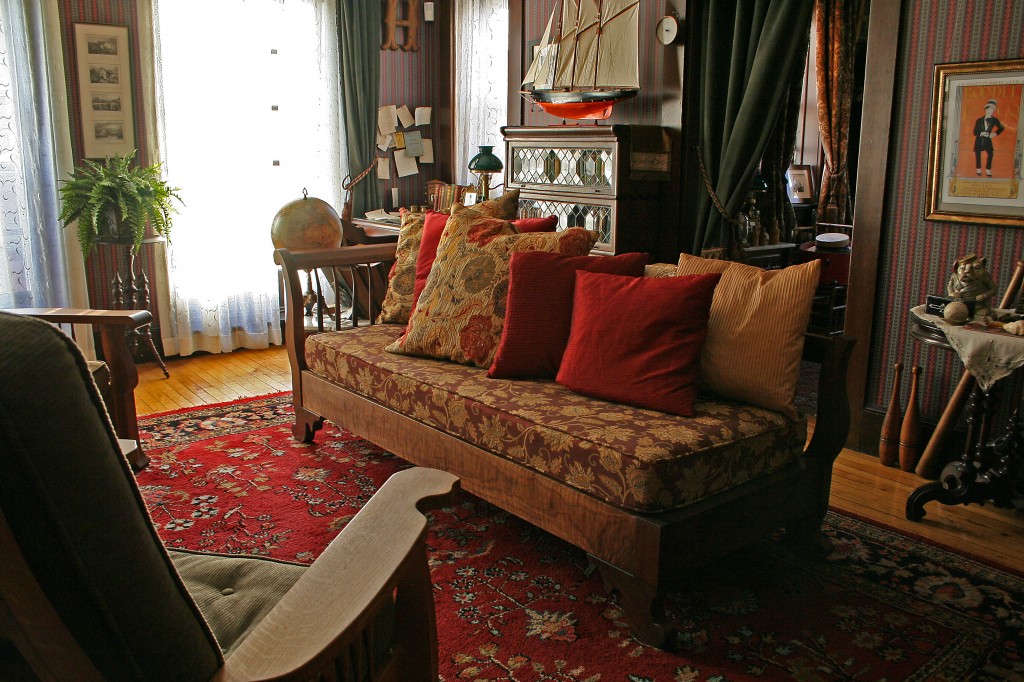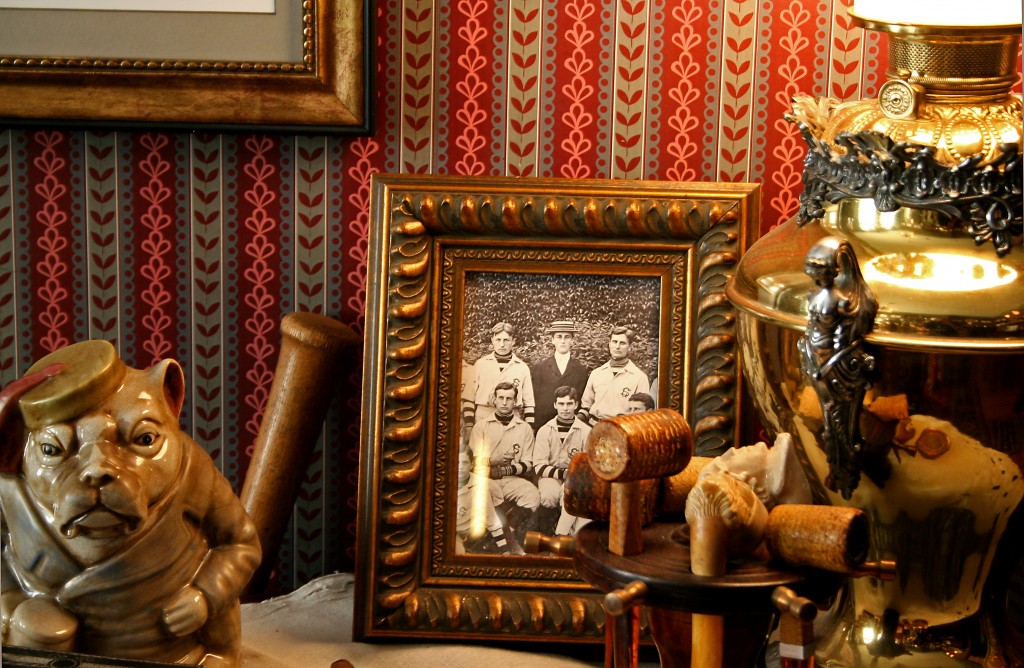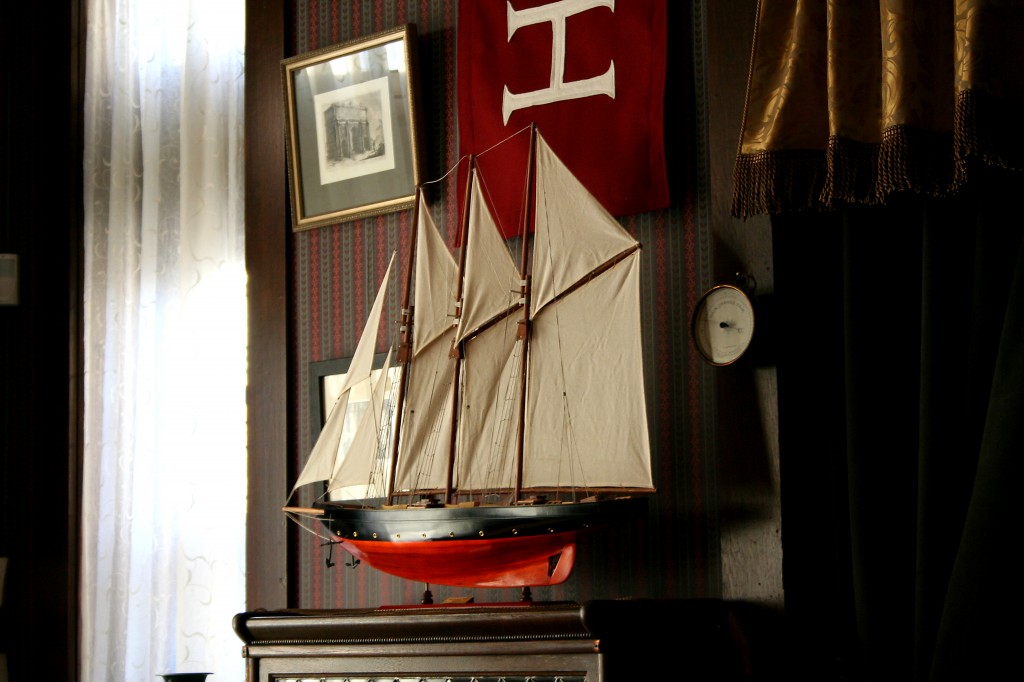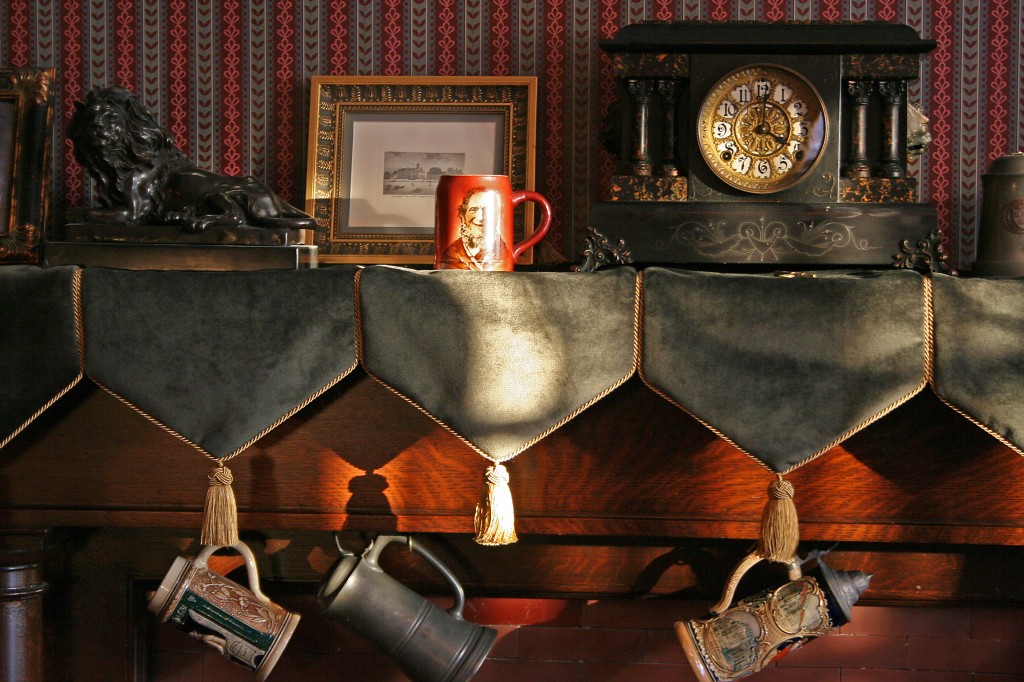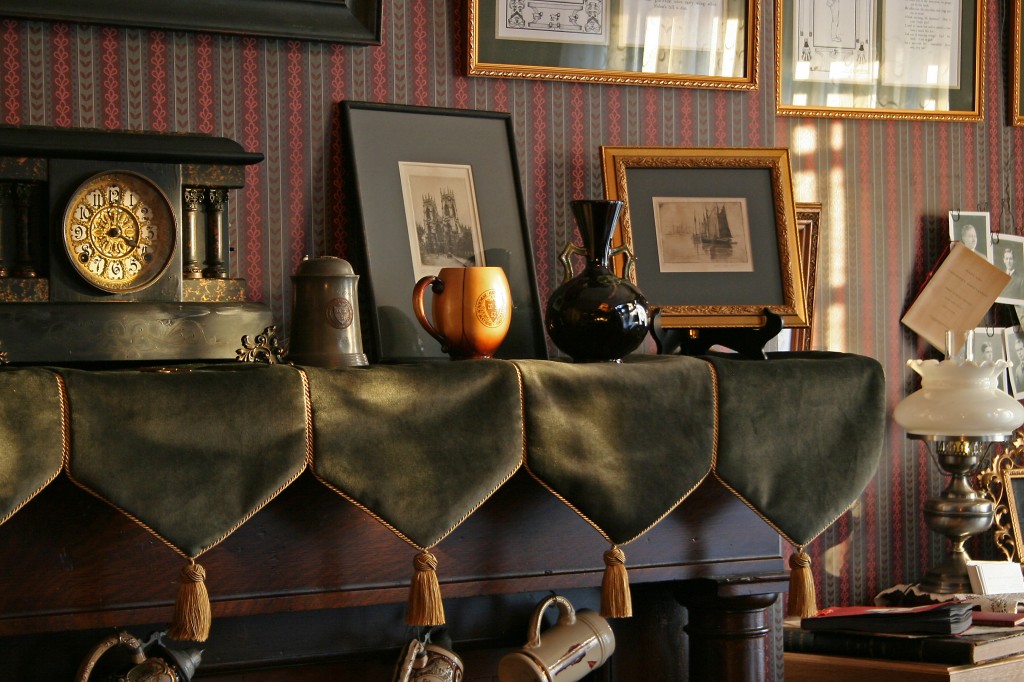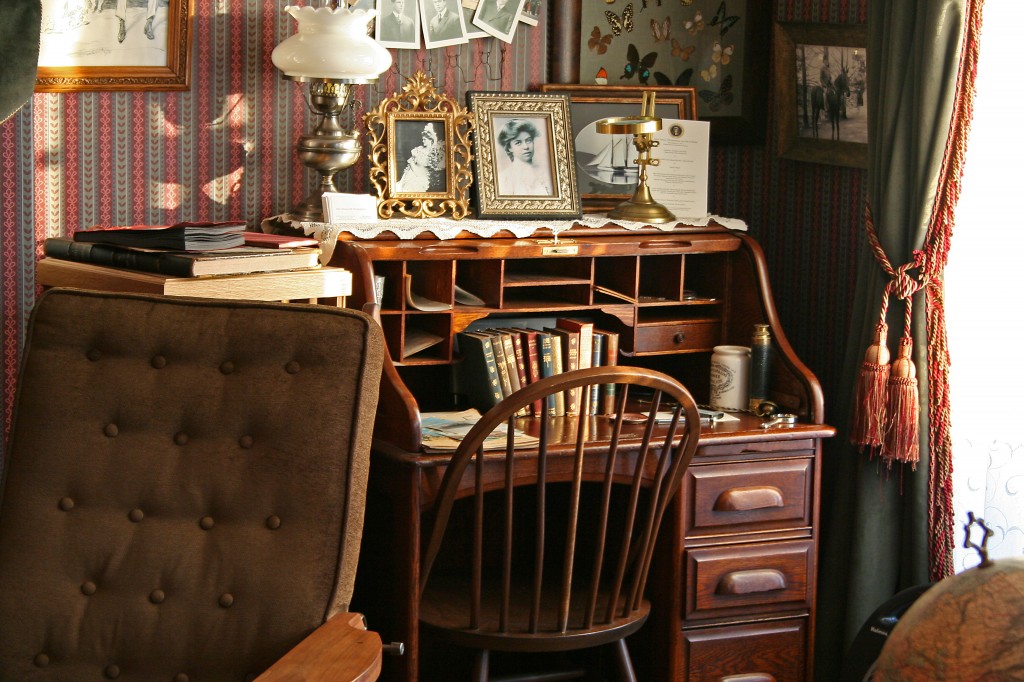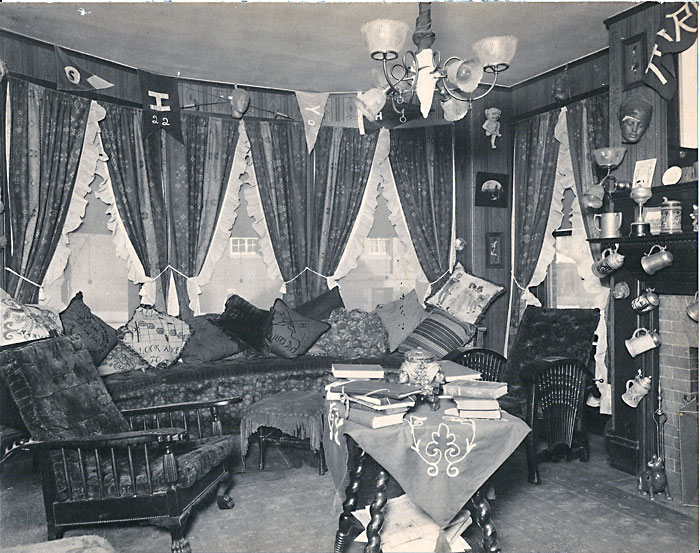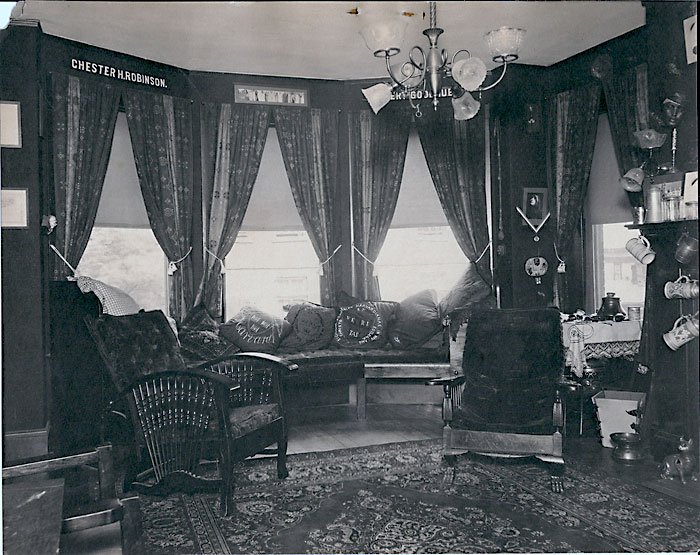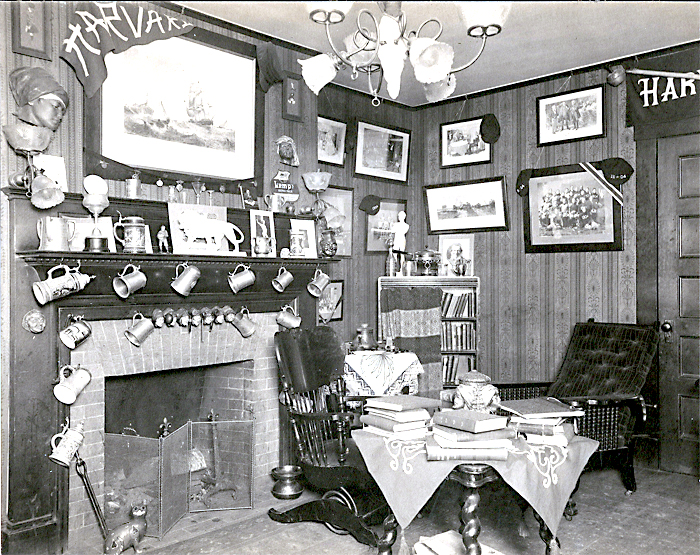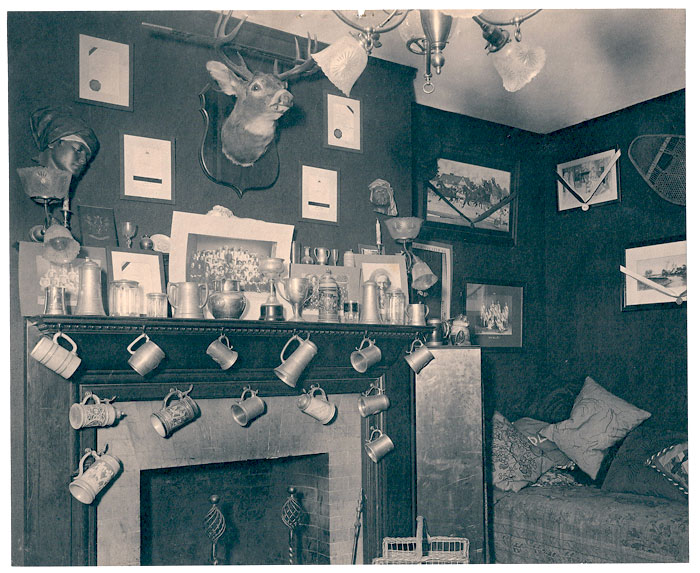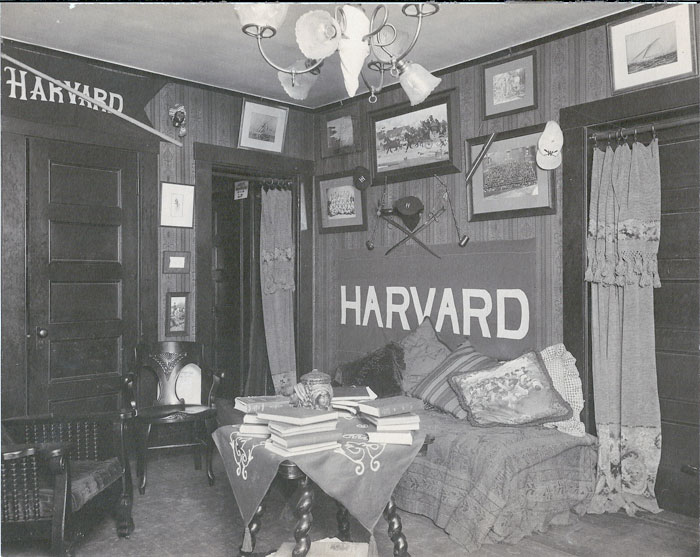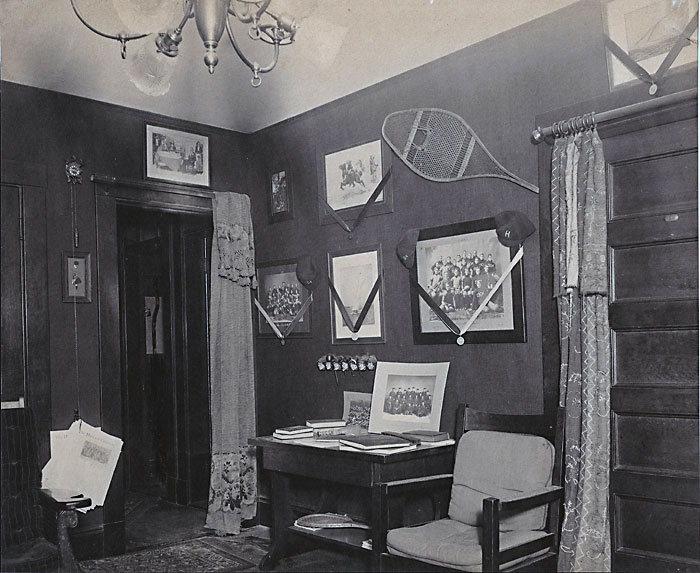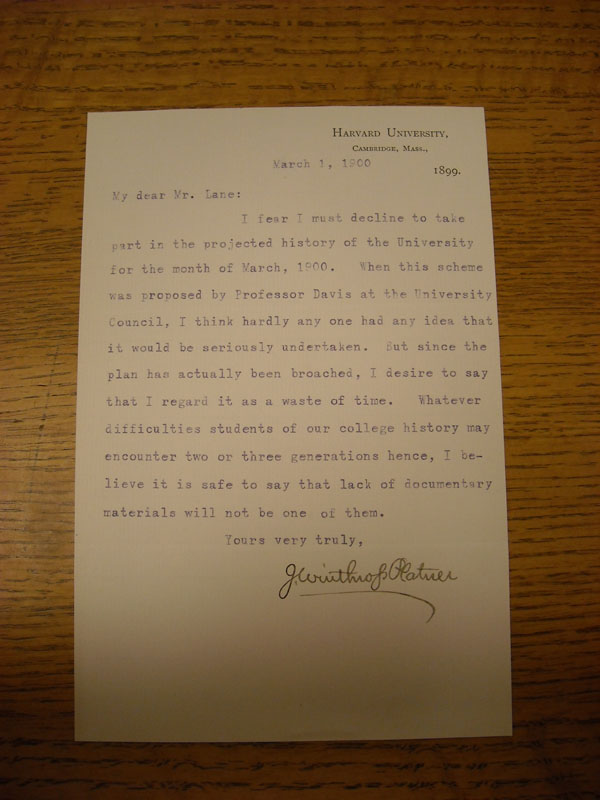Tradition holds that as the defeated British soldiers retired off the field at Yorktown, their regimental band struck up an ancient march, The World Turned Upside Down:
If buttercups buzz’d after the bee
If boats were on land, churches on sea
If ponies rode men and if grass ate the cows
And cats should be chased into holes by the mouse
If the mamas sold their babies
To the Gypsies for half a crown
If summer were spring
And the other way ’round
Then all the world would be upside down!
I was reminded of these verses the other day, when looking through our collection of historical Harvard student room photos in preparation for a project we’re sponsoring, the Adams Room Catalog, which will allow occupants new and old to see who has lived in a particular suite before them. One of my favorite images has always been the one below. Simply put, it is precisely what you imagine when you think: Victorian room. 
This particular picture has also been very important for us in terms of guiding acquisitions for the Suite. It is so clearly photographed that we can use digital enhancement to pick out the finest details. In particular, this photo led us to discover the wire carte de visite hangers we see again and again in the various period room photos. Here’s a closeup:
Eventually, after much searching we managed to find two of these extremely rare wire holders – at considerable cost. Here’s one of ours, above FDR’s desk:
But ours doesn’t look quite the same, does it? Rather bare in fact. Well, the reason is that the cards have mysteriously been dropping off the hanger. The slightly breeze or touch, and they fall like leaves off an autumn tree. There’s probably at least a good dozen on the floor behind the desk as I write. The solution however, is finally at hand: it seems I had hung the holders upside down: the Victorian hangers don’t clamp the pictures as modern refrigerator holders do, but rather support them in a wire loop from below – something you can clearly see in the period enlargement above, and which I saw, oh wise curator that I am, for the first time the other day. I wonder what other little jokes from the past await my discovery… The world turned upside down indeed.
And speaking of the future: Today’s article in the Wall Street Journal notes that with the potential change in tax laws for 2013, now is a particularly good time to consider year-end charitable giving, stating that “Under current law, donations of assets that have risen in value, such as shares of stock, often qualify for a deduction at the full market price, enabling donors to skip paying capital-gains tax on the appreciation.”
As a registered 501(c) 3 public charity, the Foundation stands more than ready to accept your charitable donation, and we can certainly use your support to fund our upcoming scholarship and educational programs.
Some people read history, others make it. Support the FDR Suite Foundation

